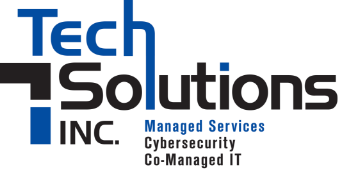Software updates have always been a critical part of network security and IT infrastructure. While most updates are smaller to fix patches, the upgrade to a completely new operating system allows for the implementation of newer and better technologies to keep your device safe and running smoothly. Windows 11 will be released on October 5, and we are excited for the features and changes it will bring to Windows devices. Let’s dive into some of them now!
So, what is changing in Windows 11? This upgrade adds many cool new features to the existing Windows 10 environment.
- User Interface – The UI will be changed to include a rounded and pastel feel that resembles a Mac interface with a centered menu and taskbar.
- Ability to Run Android Apps – You will be able to download Android apps as well as Windows apps. The Android apps will be integrated into the Microsoft Store through an Amazon Appstore partnership. While this feature will not be available immediately, you can expect to see it in the coming months after the upgrade is released.
- Widget Access – The upgrade will also be adding easy access to widgets directly from the taskbar, making them more user friendly.
- Microsoft Teams – Teams will be integrated directly into the taskbar, making it faster and easier to access.
- Gaming Technologies – Xbox technology such as Auto HDR and DirectStorage will be added to improve the gaming experience on Windows PCs.
- Multiple Displays – There will be an improved transition from an external monitor to a laptop screen.
- Multitasking – Microsoft has improved the ability to multitask with the introduction of Snap Groups and Snap Layouts. These allow you to create groups of apps to sit on the Taskbar so you can quickly switch between tasks without losing your open window locations.
- VM Support – They have also improved the virtual desktop engine, which allows you to set up multiple virtual desktops (i.e. work, gaming, school) and switch between them.
These features standout the most in the upcoming operating system release. There are more features not listed in this article, and you can read a full list of them here on the Microsoft website.
To be able to install the update on your existing computer, your device must meet certain minimum requirements. The requirements are as follows:
- Processor: 1 gigahertz (GHz) or faster with at least two cores on a compatible 64-bit processor or SoC
- RAM: 4GB
- Storage: 64GB
- System Firmware: UEFI, Secure Boot capable
- TPM: Trusted Platform Module 2.0
- Graphics Card: DirectX 12 or later with WDDM 2.0 driver
- Display: 720p, 8-bit per color channel, at least 9-inch diagonal
- Internet Connection and Microsoft Account
Most newer computers (0 to 4 years old) will meet these requirements. If you have an older computer, it may be time to investigate replacement as an option to start using Windows 11. Updating your hardware is always beneficial for both security and speed purposes.
The upgrade will be delivered to Windows 10 computers via Settings/Windows Updates. Not everyone will receive the update at the same time as there is a planned rollout that Microsoft is currently finalizing.
We hope you are as excited as we are for this major update to Windows. Feel free to contact our team if you have any questions relating to Windows 11.
